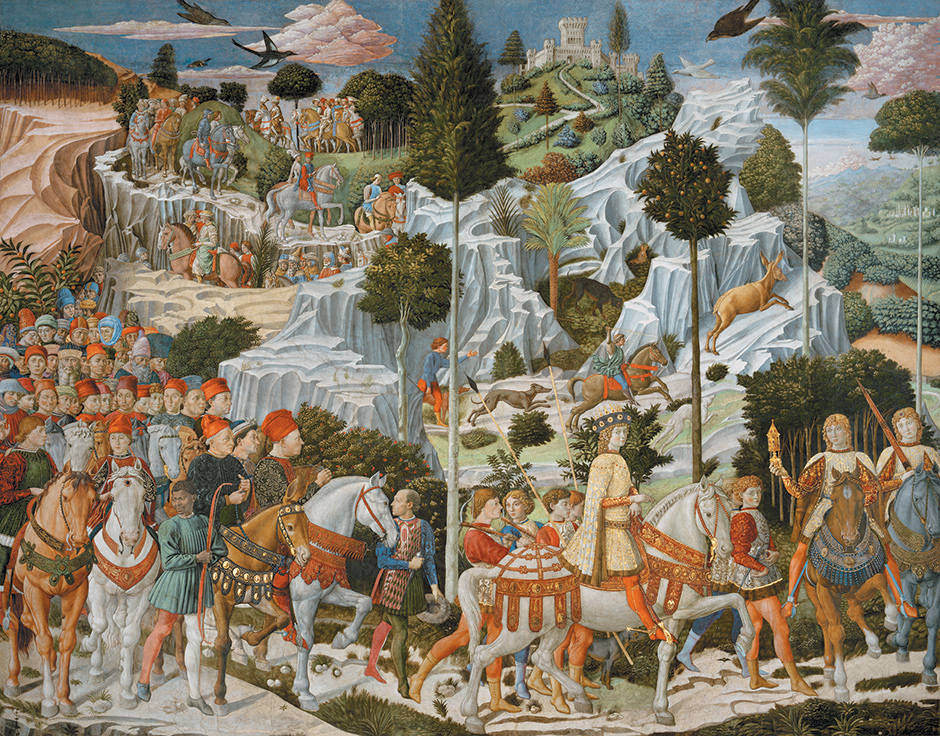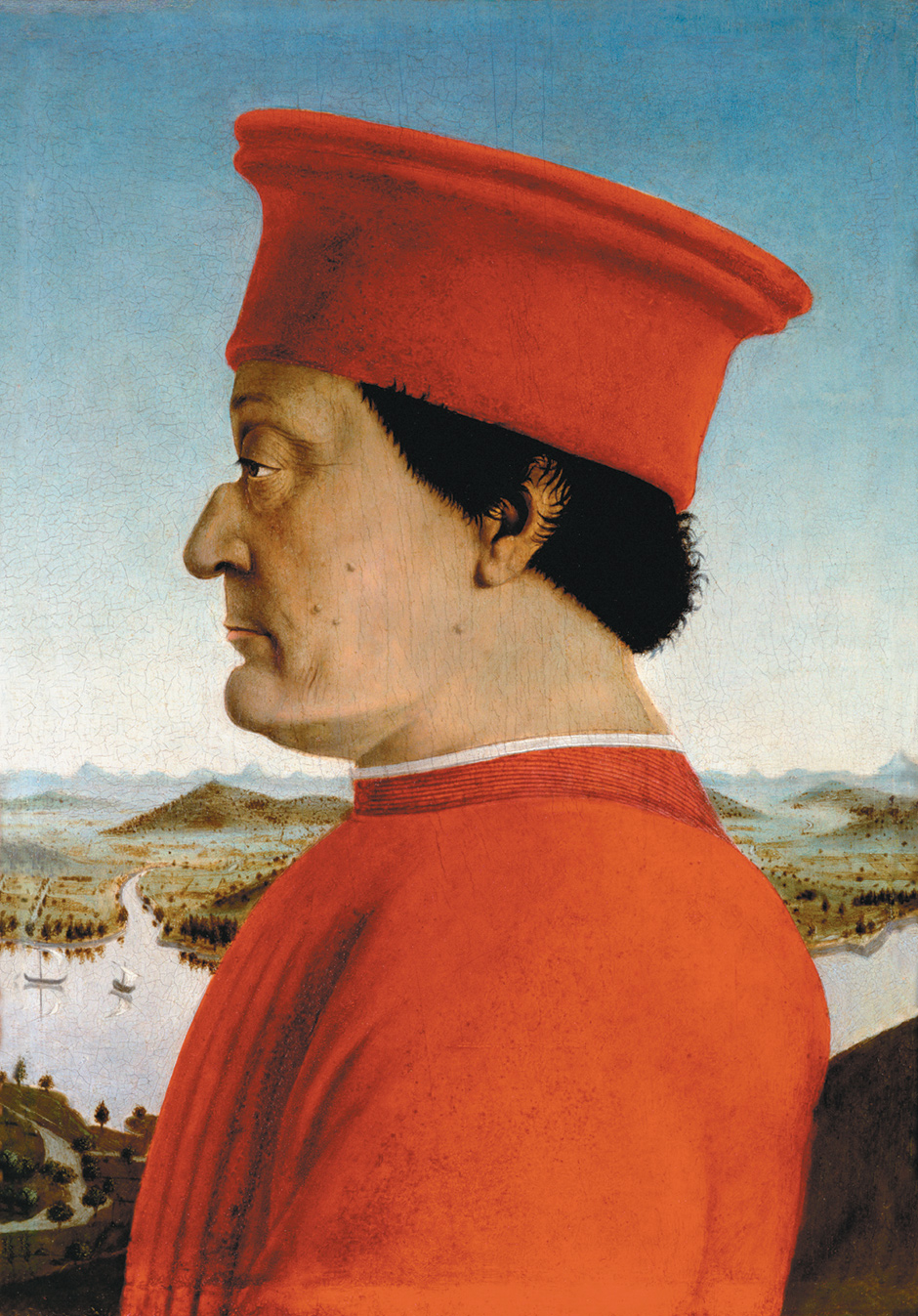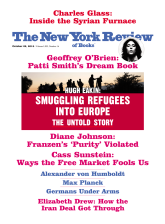1.
Shortly before his death last year, the eminent French medievalist Jacques Le Goff published a small book that may be considered his scholarly testament and that has now been translated into English by Malcolm DeBevoise with the title Must We Divide History into Periods? The answer Le Goff ultimately gives to his question is yes, claiming that periodization makes “the study of history both feasible and rewarding”; but the main point of his argument is to redefine the commonly accepted historical period known as the Renaissance. His central thesis, which is a summary restatement of ideas he had expounded in earlier studies, is that the “Middle Ages,” frequently defined as the period from the conversion of the emperor Constantine in the fourth century to the fall of Constantinople in 1453, in fact lasted until at least the middle of the eighteenth century.
Le Goff was a leading member of the influential Annales school of history, named after the scholarly journal founded by Lucien Febvre and Marc Bloch in 1929, which emphasized social, economic, geographic, and long-term trends rather than political, military, or diplomatic history. Although he never knew him personally, Le Goff’s intellectual inspiration was Bloch, murdered by the Nazis in 1944 because of his part in the French resistance and famous for his innovative work on “magic-working kings” in France and on agrarian history in the eighteenth century.
The Annales school put great emphasis on what it called the longue durée, an extended period of time measured in geographical and socioeconomic terms. One of the school’s finest achievements is the monumental study by Fernand Braudel (who coined the phrase longue durée) of the Mediterranean world in the age of Philip II of Spain, a panoramic view of life on the sea but also in the desert and mountains over two or three centuries, which emphasizes not specific events or people but vast social, economic, climatic, and geographical trends, and such timeless activities as transhumance, the movements of sheep from lowland to highland and back as the seasons change. It is one of the great works of twentieth-century historiography, conceived and outlined, amazingly, while Braudel was a prisoner of war in Lübeck, Germany; in the early 1940s.
In discussing different aspects of organizing—and understanding—historical time, Le Goff begins with a discussion of early attempts at periodization found in the Book of Daniel and the work of Saint Augustine. Both ways of looking at time, one based on the four seasons, the other on the six days of creation, pessimistically implied that the world was growing old, although Augustine held out the possibility of some sort of renewal based on “the prospect of redemption with regard to the past and of hope with regard to the future.”
It was not until the fourteenth century that the concept of the Middle Ages (media aetas)—the period of roughly the preceding one thousand years—was developed by writers who felt they were at the beginning of a new, better epoch. The great Italian poet and humanist Petrarch (1304–1374) was the first to delineate the period that preceded him as benighted, claiming that he stood in a new dawn that heralded a return to the humanistic values of Greek and Latin antiquity in contrast to the preceding period of oppressive scholasticism and religion.
Le Goff wishes to emphasize what he calls “a long Middle Ages,” lasting from the fall of the Western Roman Empire until the French Revolution in the eighteenth century. Employing the perspective of the longue durée, he writes:
Important as the Renaissance undoubtedly was, and however reasonable it may seem to mark it off as a discrete segment of historical time, I do not believe that the Renaissance can truly be said to constitute a separate period. It seems to me instead to constitute the last renaissance of a long Middle Ages.
His most succinct defense of his position is found in a six-page essay in an earlier collection of his writings, L’Imaginaire médiéval (1985), which has been handsomely translated by Arthur Goldhammer in The Medieval Imagination (1988) as “For an Extended Middle Ages.” There he claims:
I have no intention of reviving the interminable quarrel over the Renaissance versus the Middle Ages. I ask only that the Renaissance be seen in proper proportion, as a brilliant but superficial interlude.
Emphasizing enduring continuities, Le Goff argues that “certain fundamental structures persisted in European society from the fourth to the nineteenth century, bestowing a coherent character on a period of some fifteen centuries.” He emphasizes that such periods “are typically long and typically marked by phases of significant, though not epochal, change. In the case of the Middle Ages these subperiods are usefully called renaissances.” To illustrate what he means, he cites a formidable range of institutions, conditions, and attitudes that, despite the fact that they may have altered somewhat over time, remained essentially the same throughout this prolonged period. One example is the fact that most people remained Christian, even though there were significant changes in theology, including the Protestant Reformation; another is the prolonged dominance of an agrarian economy despite developing commercialism. Le Goff also points out that
Advertisement
between antiquity and the time when modernity was fully embraced (the middle of the nineteenth century) renaissance was a recurrent phenomenon: the Carolingian renaissance in the eighth and ninth centuries, the renaissance of the twelfth century, the “great” Renaissance that began in Italy in the twelfth to fourteenth centuries…and the renaissance of the eighteenth and nineteenth centuries in art, literature, and theology.
In the midst of his defense of a long Middle Ages in Must We Divide History into Periods?, Le Goff pauses briefly to consider the implications of 1492, considered by many as a beginning of the Renaissance, and of Columbus, who he insists was “very much a man of the Middle Ages,” because he was “motivated primarily by a desire to lead the pagans [to]…the God of the Christians.” He poses a basic question: “The question for the historian, then, becomes this: in the enlargement brought about in 1492, which is more important, that which ends or that which continues?” But should we not add a third possibility: that which begins?
The period we are accustomed to call the Renaissance included, in addition to Columbus’s discovery of America, Copernicus’s discovery of heliocentricity, Magellan’s circumnavigation of the globe, Harvey’s discovery of the systemic circulation of the blood, Gutenberg’s discovery of printing, the rediscovery of Greek, the rise of the nation-state and the gradual decline of feudalism, the arrival of vast quantities of gold and silver from the New World and the creation of an industrial monetary economy, a new appreciation of nature, the introduction of portraits, landscapes, linear perspective, and easel painting in art, and the Protestant Reformation. These are only a few of the best-known discoveries and innovations of the period.
To look at the Renaissance from another angle, there are the discernible, definable differences in feudal chivalry between the Chanson de Roland and Orlando Furioso or in the concept of autobiography between Saint Augustine and Benvenuto Cellini or Montaigne. Such examples attest to fundamentally altered ways of thinking.
Choosing to emphasize the similarities shared by the fourteenth, fifteenth, and sixteenth centuries with earlier epochs or the differences between them is a bit like trying to decide whether a glass is half-empty or half-full. It depends on one’s perspective, one’s inclinations, and the argument one wishes to make. Le Goff’s view of a long Middle Ages is a valuable corrective to exaggerated claims for the revolutionary newness of the European Renaissance. It is salutary to be reminded that despite all the innovations in thought and art, religion and economics, the daily life of many people remained essentially medieval, that plagues and famine continued, that monarchy persisted as the dominant political reality, that a rural economy prevailed, that most people, whether Catholic or Protestant, were Christians,1 and that white bread remained a comparative rarity until the eighteenth century. Le Goff’s capacious learning and sophisticated analysis of the alterations and continuities during the longue durée of his Middle Ages are richly informative and thought-provoking, even if one believes the Renaissance was more distinctive than he does.
2.
Alexander Lee’s new history of the Italian Renaissance also wishes to revise our view of it, but in quite different respects. He is concerned to refute what he repeatedly calls “familiar preconceptions” of the Renaissance as a “pure, ideal world.” He seems to think that most people believe the great men of the Renaissance—the artists, writers, statesmen, humanists, and condottieri—were ideal human beings, embodiments of perfection, who lived in a golden world of unsullied beauty and unstained virtue. At pains to disabuse us of such a utopian vision, he depicts a Renaissance of “sex, greed, violence and depravity.” Despite his extensive reading in primary and secondary sources, which should have given him a more nuanced view of human nature, Lee’s portrait of this period is suffused with a surprising amount of Manichaean dualism. Good and bad, like white and black, are polar opposites that combine to form at least fifty shades of gray in his lurid account of the seamy underside of the Italian Renaissance.
At the outset of his study, in what he calls his “snapshot of the young Michelangelo,” he gives symbolic significance to the story recounted by both Cellini and Vasari of how the teenage boy got into an argument and fight with his pal Pietro Torrigiano, who broke his nose in the scuffle. Lee claims, with some anatomical confusion, that Michelangelo’s broken nose reveals his “feet of clay.” What he means by that is that the great artist was not the perfect man we might suppose; instead, he was “proud, touchy, scornful, and sharp-tongued,” failed to bathe or comb his hair, and was bisexual:
Advertisement
As arrogant as he was talented, he was a dirty, disorganized, and tormented individual who was as easily embroiled in fights as he was bound to the will of popes, and as susceptible to Neoplatonic homoeroticism as he was to the reassurances of the Church and the blandishments of a cultured and elegant lady.
In short, the creator of the David and the Sistine ceiling was, we are informed, an imperfect human being, and his famous broken nose is a symbol of the fact that Renaissance men and women, however noble their achievements, were also often nasty, venal, cruel, sex-obsessed people—contrary to what we are assumed to have supposed.
Almost no one escapes Lee’s conspiratorial theory of history, which is repeatedly signaled by his recurrent use of the ominous verb “lurk.” The Renaissance papacy, notorious in its day, is an easy target for his opprobrium: Alexander VI “slept with virtually anything that moved,” Leo X and Julius II had “a particular taste for young boys,” and Sixtus IV was reputed to have given his cardinals special dispensation “to commit sodomy during the summer months.”
The Renaissance papacy generally was “dark, devious, and utterly corrupt” and used the fine arts “to mask or to celebrate its darkest and ugliest face.” He laments that the magnificent art commissioned by the papacy, like Raphael’s School of Athens, decorated walls that “looked down on men who willingly devoted themselves to wild sex and debauchery.” Only with Pius II does Lee have difficulty finding any shocking vices except for nepotism, and hence he is obliged to resort to the supposition that “while there is no direct evidence…it [is] hard to believe he did not sneak the odd bribe to well-placed individuals to improve his chances of acceding to the papal throne.”
If the papacy used great art to conceal its devious sins, so did secular men of eminence. Federico da Montefeltro, who created the court at Urbino immortalized by Castiglione in The Book of the Courtier, is described as “among the most underhanded, backstabbing men of the age”; Sigismondo Malatesta, who commissioned the imposing Tempio Malatestiano in Rimini created by Leon Battista Alberti and decorated by Piero della Francesca and Agostino di Duccio (and who his contemporaries knew was a monster), is condemned as vicious, treacherous, and sadomasochistic. All rich bankers are accused of commissioning works of art and architecture out of “the desperation with which they clamored to save their blackened souls through art.” “Every brick, every brushstroke, testified to the usury, extortion, and downright dirtiness that was essential to every fortune made.”
Perhaps the figure whose reputation suffers most at Lee’s hands is Cosimo de’ Medici, beloved by his contemporaries, venerated by the humanist writers of his day,2 and honored with the unique title Pater Patriae (Father of His City) by the city of Florence upon his death. He is thought by Lee to be “among the most ghastly people of the entire period.”
An extended central section of Lee’s book is focused on Benozzo Gozzoli’s well-known frescoes in the tiny chapel of Palazzo Medici Riccardi, commissioned by Cosimo, depicting The Journey of the Magi to Bethlehem, which Lee, like every informed viewer, recognizes as a form of propaganda for the Medici family; for once one realizes that most of the figures are portraits of known quattrocento personages, it is impossible to regard them in any other light (see the painting on page 63). Lee recounts how, when young Galeazzo Maria Sforza, the future Duke of Milan, arrived in Florence on April 17, 1459, he went to call on Cosimo de’ Medici in his palace, and he conjectures that Cosimo “may well have” received Galeazzo in the intimacy of his private chapel rather than in one of the grand public rooms in order to impress him with “the rich, exuberant frescoes.” In the ensuing forty or more pages, he repeatedly returns to this imagined moment to explain what the purpose of the frescoes was, how they demonstrate not only the wealth, power, and greatness of the family but also Cosimo’s guilt over what a “moneygrubbing, power-hungry megalomaniac” he was, and how the paintings were “designed to cover up” his Mafia-like vices.
Lee also recurrently imagines what fifteen-year-old Galeazzo would have felt as he gazed on the fresco’s portraits of Cosimo, Piero, and Lorenzo de’ Medici, Aeneas Silvius Piccolomini who became Pope Pius II, Marsilio Ficino, the Byzantine Emperor John VIII Palaiologos, Sigismondo Malatesta, and other notable figures of the time. Somehow he fails to mention what Galeazzo might have thought on seeing himself also depicted there, riding beside Malatesta.
It’s curious that Lee should describe Galeazzo’s visit to the Medici chapel as a matter of conjecture, when we possess the letter Galeazzo sent to his parents describing the day he arrived in Florence, copies of which are in Milan and Mantua, in which he explicitly says that Cosimo received him in his chapel (“Visitay el magnifico Cosmo, quale atrovay in una sua capella”). But it is even stranger that Lee should spend so much time telling us how Cosimo wanted to impress Galeazzo with the frescoes and what Galeazzo learned from them, since in fact Galeazzo could not possibly have seen what didn’t exist: Benozzo Gozzoli did not actually begin painting The Journey of the Magi to Bethlehem until some time after Galeazzo had departed Florence on May 3, 1459.3
Throughout his fervent descriptions of Renaissance depravity and crime, Lee deplores a “familiar tendency to divorce literary and artistic production from more ‘human’ concerns,” claiming that the “real” world of the Renaissance was
born not of the purely aesthetic concerns of otherworldly beings removed from the joys and sorrows of ordinary people, but among unrequited passions, broken hearts, sexual obsessions, and suffering.
As an example, he wants us to know that
however chaste Michelangelo may have been while he was carving the David, it is inconceivable that his sexual attitudes were not at least touched by the sheer number of prostitutes whom he would have encountered while walking through the streets of Florence.
For all its learning and research, Lee’s account of the Italian Renaissance is based on a relentlessly repeated postulate—what Shakespeare called a stalking horse—that the “familiar conceptions of the ‘Renaissance’” have misled almost everyone into thinking it was an age of perfect beauty and flawless achievement, shining virtue and unbesmirched probity. I myself have never known anyone who believed that, and one has to wonder if Lee really ever has either.
-
1
One of the classics of the Annales school is Lucien Febvre’s groundbreaking Le Problème de l’incroyance au XVIe siècle: La religion de Rabelais (Paris: Albin Michel, 1942). ↩
-
2
See Alison Brown, “The Humanist Portrait of Cosimo de’ Medici, Pater Patriae,” Journal of the Warburg and Courtauld Institutes, Vol. 24, Nos. 3–4 (July–December 1961), unmentioned in Lee’s bibliography. For a detailed, dispassionate description of Cosimo’s career, see John M. Najemy, A History of Florence, 1200–1575 (Blackwell, 2006), pp. 250–306. ↩
-
3
On this, see Rab Hatfield, “Some Unknown Descriptions of the Medici Palace in 1459,” The Art Bulletin, Vol. 52, No. 3 (September 1970), and Diane Cole Ahl, Benozzo Gozzoli (Yale University Press, 1996), pp. 81ff., neither of which is listed in Lee’s bibliography. ↩





